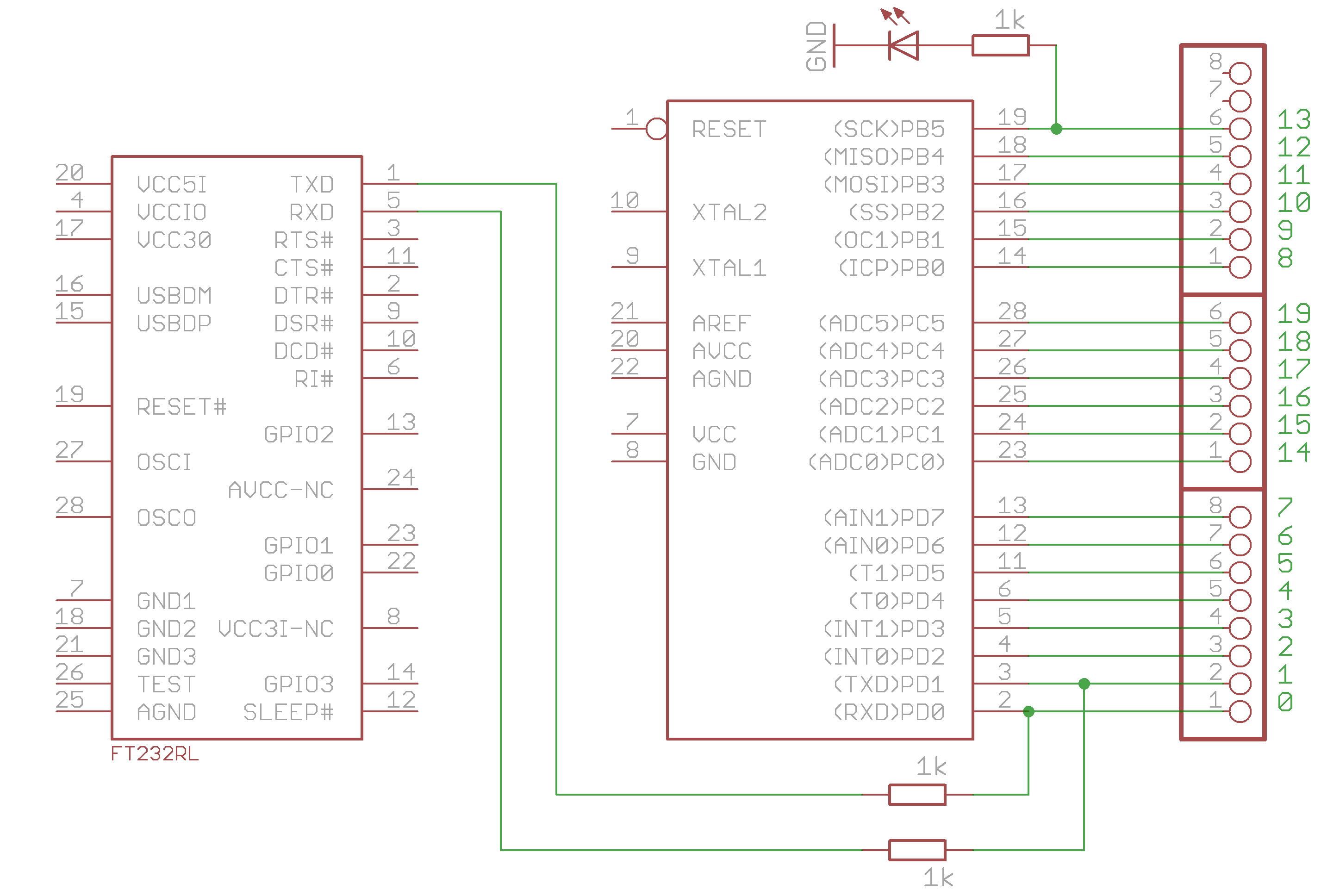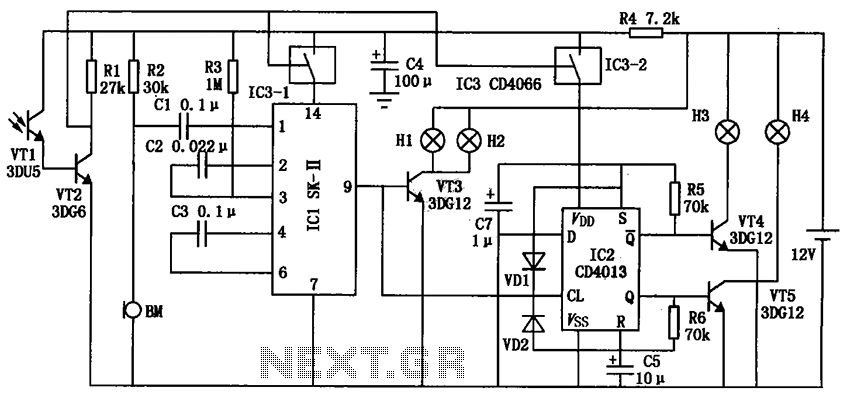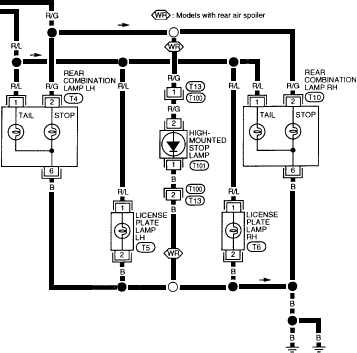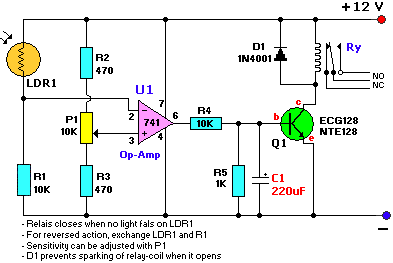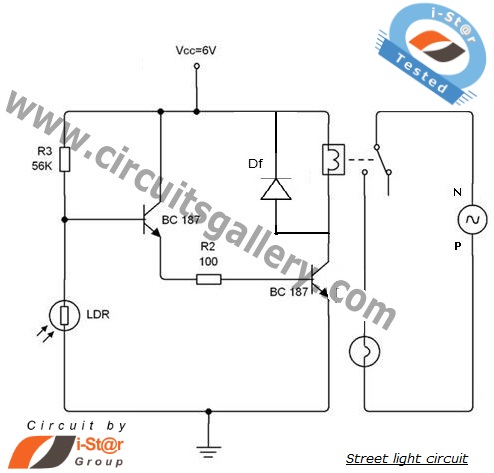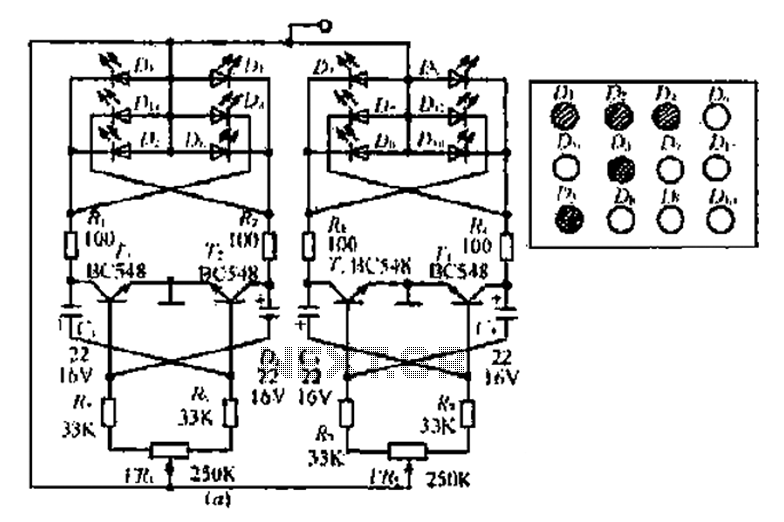
Modulated Light DX
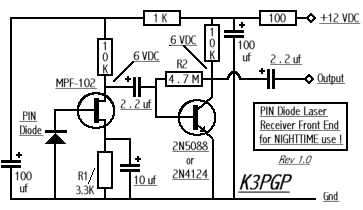
Which type of modulated light receiver should be used? A photodiode directly connected to a high-gain, high-impedance amplifier; a photodiode connected to a current amplifier; a back-biased photodiode; FET input or bipolar IC or discrete components? How can noise be minimized while maximizing amplification? Which circuit offers the best linearity of light flux input to voltage output? The answers are complex and conditional. For modulated light detection at visual wavelengths, the best and simplest options are silicon PIN or avalanche photodiodes for orange, red, and infrared; and photomultipliers for violet, blue, and green. Phototransistors are excessively noisy, amplifying their own internal noise—estimated to be around 15 to 20 dB worse in signal-to-noise ratio than an average silicon photodiode and amplifier of similar sensitive area. Light-dependent resistors (LDRs) are generally too slow, silicon solar cells are noisy and slow, and thermionic photocells often have low quantum efficiency. If gas-filled, they can also be too slow. This narrows down the selection significantly. The options further reduce when considering the specific requirements of atmospheric optical communication. The red end of the visual spectrum exhibits the greatest immunity to scattering by smoke and fog and is subject to less atmospheric turbulence scintillation than blue or violet light. Red-sensitive silicon photodiodes typically cost between $2 and $30, while photomultipliers or avalanche photodiodes can be up to fifty times more expensive. Photomultipliers with gallium arsenide photocathodes respond well to red light, but they are rarely found on the secondhand or surplus market. Most photomultipliers are sensitive only to violet, blue, and green light (S4 and S11 photocathodes). Even with the S20 photocathode, the photomultiplier's quantum efficiency at the 630 nm wavelength of the red Luxeon source is only 4%, which is significantly lower than the typical silicon PIN diode's 50% at the same wavelength. Additionally, photomultipliers require a bulky power supply, typically providing 1 kV to a resistive divider that consumes several tens of milliamps. This presents hazards due to high voltages and often necessitates a mains power supply. Chris Long has utilized these receivers on numerous occasions since the 1970s, primarily for demodulating light from mercury vapor arc lamps at the blue and ultraviolet ends of the spectrum. Details can be found in his January 1979 article in "Australian Amateur Radio," which has been reproduced elsewhere. The theory behind silicon photodiodes was thoroughly covered in a 1979 pamphlet published by EG&G Electro-Optics, which was solicited by Chris Long while investigating alternative power generation systems (solar, wind, and small hydro) at the Tasmanian University's Centre for Environmental Studies in late 1979. The document highlights the significant differences between solar cells and instrumentation photodiodes suitable for low-light applications, including modulated light detection. Below 100 kHz, the photovoltaic (PV) photodiode offers better signal-to-noise performance than an equivalent active area photoconductive (PC) photodiode; below 1 kHz, the PV silicon photodiode is far superior in signal-to-noise performance.
The selection of a modulated light receiver is critical in applications requiring accurate light detection and amplification. The choice between a photodiode, phototransistor, or photomultiplier depends on several factors, including the wavelength of light, noise characteristics, and the specific application environment. Silicon PIN photodiodes are favored for their balance of sensitivity and noise performance, particularly in the red to infrared spectrum, where they excel in atmospheric conditions. Avalanche photodiodes, while more costly, offer higher sensitivity and can be advantageous in low-light situations, though their complexity and cost may limit their use.
Photomultipliers, on the other hand, provide significant amplification but come with drawbacks such as high operational voltages and limited spectral sensitivity. Their bulky power requirements and susceptibility to noise make them less favorable for general applications compared to silicon photodiodes, especially in environments with potential hazards.
In designing a circuit for modulated light detection, considerations must include the amplifier type, whether it is a current amplifier or a high-gain voltage amplifier, and the input configuration of the photodiode. Noise reduction techniques, such as shielding and careful layout of components, are vital to maintain signal integrity. Ultimately, the choice of receiver and associated circuitry will significantly influence the performance of the optical communication system, necessitating a thorough evaluation of the specific application requirements.Which type of modulated light receiver should one use A photodiode straight into a high gain, high impedance amplifier A photodiode into a current amplifier A back-biased photodiode FET input or bipolar IC or discrete How does one minimise noise while maximising amplification Which circuit provides the best linearity of light flux input/voltage output The answers are complex and conditional. For modulated light detection at visual wavelengths, the best and simplest options are silicon PIN or avalanche photodiodes for orange, red and IR; and photomultipliers for violet-blue-green. Phototransistors are far too noisy, as they amplify their own internal noise - we estimate around 15 to 20 dB worse s/n than an average Si photodiode/amp of similar sensitive area.
LDR`s are generally too slow, silicon solar cells are noisy and slow, thermionic photocells are mostly too low in quantum efficiency - and if they`re gas filled they can also be too slow. This narrows down the options. The options narrow further when one considers the special requirements of atmospheric optical communication.
The red end of the visual spectrum has the greatest immunity to scattering by smoke and fog, and is subject to less atmospheric turbulence scintillation than blue or violet light. Red-sensitive silicon photodiodes typically retail for between US$2 and US$30 while photomultipliers or avalanche photodiodes can cost fifty times that amount.
Photomultipliers with GaAs photocathodes have good response to red light but they`re rarely available on the secondhand or surplus market. The vast majority of photomultipliers are only sensitive to violet, blue and green light (S4 and S11 photocathodes).
Even with the S20 photocathode, photomultiplier quantum efficiency at the 630 nM wavelength of the red Luxeon source is only 4%, comparing poorly with a typical silicon PIN diode`s 50% at the same wavelength. The photomultiplier also requires a bulky power supply, typically delivering 1 KV to a resistive divider consuming several tens of milliamps.
Apart from the danger of the voltages, this tends to tie you to a mains power supply. Chris Long has used these receivers on many occasions in the 1970s, though mostly for demodulating light from a mercury vapour arc lamp at the blue and ultraviolet end of the spectrum. See details in his January 1979 Australian `Amateur Radio` article `Optical Communications for the Amateur`, reproduced elsewhere on this web site.
Silicon photodiode theory was excellently covered in a 1979-vintage pamphlet issued by `EG&G Electro-Optics`, reproduced here. This was solicited by Chris Long while surveying `alternative` power generation systems (ie. solar, wind and small hydro) at the Tasmanian University`s Centre for Environmental Studies late in 1979.
The document emphasises the major differences between solar cells and instrumentation photodiodes suitable for low-light applications, including modulated light DX. Below 100 kHz, the PV photodiode provides better signal-to-noise performance than that obtained from an equivalent active area PC [photoconductive] photodiode; below 1 kHz, the PV silicon photodiode is far superior in signal-to-noise performance".
This confirms that with minimal 🔗 External reference
The selection of a modulated light receiver is critical in applications requiring accurate light detection and amplification. The choice between a photodiode, phototransistor, or photomultiplier depends on several factors, including the wavelength of light, noise characteristics, and the specific application environment. Silicon PIN photodiodes are favored for their balance of sensitivity and noise performance, particularly in the red to infrared spectrum, where they excel in atmospheric conditions. Avalanche photodiodes, while more costly, offer higher sensitivity and can be advantageous in low-light situations, though their complexity and cost may limit their use.
Photomultipliers, on the other hand, provide significant amplification but come with drawbacks such as high operational voltages and limited spectral sensitivity. Their bulky power requirements and susceptibility to noise make them less favorable for general applications compared to silicon photodiodes, especially in environments with potential hazards.
In designing a circuit for modulated light detection, considerations must include the amplifier type, whether it is a current amplifier or a high-gain voltage amplifier, and the input configuration of the photodiode. Noise reduction techniques, such as shielding and careful layout of components, are vital to maintain signal integrity. Ultimately, the choice of receiver and associated circuitry will significantly influence the performance of the optical communication system, necessitating a thorough evaluation of the specific application requirements.Which type of modulated light receiver should one use A photodiode straight into a high gain, high impedance amplifier A photodiode into a current amplifier A back-biased photodiode FET input or bipolar IC or discrete How does one minimise noise while maximising amplification Which circuit provides the best linearity of light flux input/voltage output The answers are complex and conditional. For modulated light detection at visual wavelengths, the best and simplest options are silicon PIN or avalanche photodiodes for orange, red and IR; and photomultipliers for violet-blue-green. Phototransistors are far too noisy, as they amplify their own internal noise - we estimate around 15 to 20 dB worse s/n than an average Si photodiode/amp of similar sensitive area.
LDR`s are generally too slow, silicon solar cells are noisy and slow, thermionic photocells are mostly too low in quantum efficiency - and if they`re gas filled they can also be too slow. This narrows down the options. The options narrow further when one considers the special requirements of atmospheric optical communication.
The red end of the visual spectrum has the greatest immunity to scattering by smoke and fog, and is subject to less atmospheric turbulence scintillation than blue or violet light. Red-sensitive silicon photodiodes typically retail for between US$2 and US$30 while photomultipliers or avalanche photodiodes can cost fifty times that amount.
Photomultipliers with GaAs photocathodes have good response to red light but they`re rarely available on the secondhand or surplus market. The vast majority of photomultipliers are only sensitive to violet, blue and green light (S4 and S11 photocathodes).
Even with the S20 photocathode, photomultiplier quantum efficiency at the 630 nM wavelength of the red Luxeon source is only 4%, comparing poorly with a typical silicon PIN diode`s 50% at the same wavelength. The photomultiplier also requires a bulky power supply, typically delivering 1 KV to a resistive divider consuming several tens of milliamps.
Apart from the danger of the voltages, this tends to tie you to a mains power supply. Chris Long has used these receivers on many occasions in the 1970s, though mostly for demodulating light from a mercury vapour arc lamp at the blue and ultraviolet end of the spectrum. See details in his January 1979 Australian `Amateur Radio` article `Optical Communications for the Amateur`, reproduced elsewhere on this web site.
Silicon photodiode theory was excellently covered in a 1979-vintage pamphlet issued by `EG&G Electro-Optics`, reproduced here. This was solicited by Chris Long while surveying `alternative` power generation systems (ie. solar, wind and small hydro) at the Tasmanian University`s Centre for Environmental Studies late in 1979.
The document emphasises the major differences between solar cells and instrumentation photodiodes suitable for low-light applications, including modulated light DX. Below 100 kHz, the PV photodiode provides better signal-to-noise performance than that obtained from an equivalent active area PC [photoconductive] photodiode; below 1 kHz, the PV silicon photodiode is far superior in signal-to-noise performance".
This confirms that with minimal 🔗 External reference
